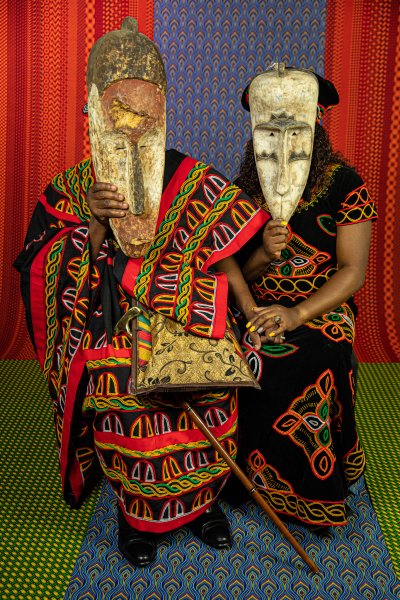
This article is more than
5 year oldCameroon is concurrently fighting an internal war commonly known as the Anglophone Crisis.
After World War I the country was divided into 80 percent French and 20 percent British territories. The latter was further separated into Northern and Southern British Cameroons.
In the 1960s, part of the British territory joined Nigeria, and the rest was annexed to French Cameroon. Both territories retained a certain level of autonomy as a federation. In 1972, the federation was dismantled, giving French Cameroon executive power over both English and French regions.
READ MORE
When the current president, Paul Biya entered into power in 1982, he changed the country's name to La Republique du Cameroun. A progressive erosion of the Anglophone culture began to take place, with English speaking teachers being replaced by Francophones; and French magistrates taking over the English common-law judicial system.
Protests by teachers and lawyers in 2016 turned violent when French military officials were sent in response to the uprisings. A new wave of separatists was formed, declaring independence over the Anglophone side. They refer to this self-declared country as Ambazonia, in reference to the Ambas Bay, a body of water separating the Southern Cameroons region from the republic of Cameroon.
The violence has escalated to the point where civilians often get caught in the cross-fire between military and armed separatists in the country. Villages have been burned, and hundreds of thousands have been displaced. Many are forced to live in the jungle and seek asylum in neighbouring countries. Others have made it further afield, entering countries like South Africa through the Kruger National park, facing natural predators like lions, leopards and rhinoceros along their journey.
"Humans of the Forgotten War" is an umbrella project created by Reframe House for the Victoria Relief Foundation, that will be released in staggered stages to raise awareness on the current situation on the ground. It makes use of conceptual photography and film to interpret the stories of asylum-seekers, refugees, Internally Displaced People (IDPs), and prisoners of war through artistic means.
Collected here are some of the photographs that feature in the project. These images are part of the "Humans of the Forgotten War: Stories" series, with some of the real names changed for safety purposes.

|
"I can't take my mask off because my family, friends or property can be targeted back home.” This family left Cameroon before the conflict between Francophones and Anglophones erupted. They wish to be able to return to their homeland and take their children, but fear being caught up in the violence. They wear traditional Cameroonian attire set against a South African Shweshwe fabric backdrop, representing the country that they now reside in. HUMANS OF THE FORGOTTEN WAR |
Many have been living hiding in the jungle for months. Those who manage to escape to neighboring countries often live in exile. "For the past ten years I haven't had a home. I'm still under refugee status, which makes it very difficult to do certain things. It's like you're in an open prison. You feel that you're free but you're not free because you're limited in so many things," said Ben, one of those who spoke to Reframe House for the project.
The United Nations Office for the Coordination of Humanitarian Affairs has identified 4.4 million people in need in Cameroon, with 53 percent of those being children. "There is a complete lack of visibility of the crisis," said Carla Martinez, Head of Office, OCHA Cameroon.
"The underfunded response means that many of our humanitarian partners are having to close down because they don't have funds to continue," added Martinez. The loss of resources will translate into a population that continues to live without adequate medical support, education, shelter or food.
Journalists on the ground are often targeted and turned into victims of torture and violence. They operate in fear, often risking their life to get the stories out. Most people in the anglophone region feel caught up between two evils—the separatists who say they're fighting for independence, and the soldiers who say they're trying to protect them.
The already complex conflict of the Anglophone Crisis is further compounded with a rather vast number of belief systems at play in the area. There are those who wish for independence and the creation of an Ambazonian nation, others advocate for effective decentralisation, there are federalists who wish for two, four to six, and ten state federation, as well as con-federalist view points.
As a result of the conflict, there are many who have become prisoners of war — such as journalists, separatists and civilians. Conditions in prison are deplorable, with food being used as a means to control inmates.
The following conceptual images were created with South Cameroonian displaced people representing the sentiments and emotions that prisoners in Cameroon have expressed.
They wear animal masks predominantly from Cameroon, alluding to the feeling of despair and abandonment that many of them experience behind bars. Those being photographed need to protect their identity out of fear of being targeted. They wear Ndop cloth, traditional Cameroonian attire which was once exclusively used for nobility, but later popularised in other regions of the country.

|
Humans of the Forgotten War HUMANS OF THE FORGOTTEN WAR |
For this project, contact with the French military was established, but they refused to comment. The government did not respond.
To find out more details about the project go to www.HumansoftheForgottenWar.com